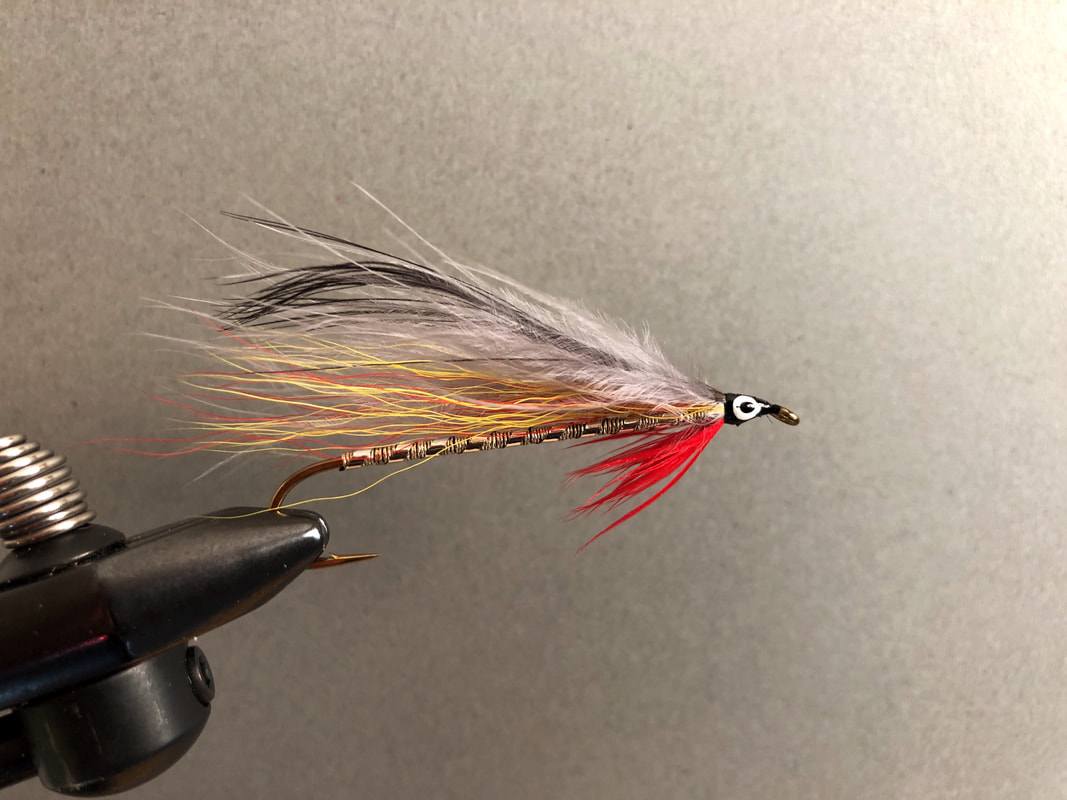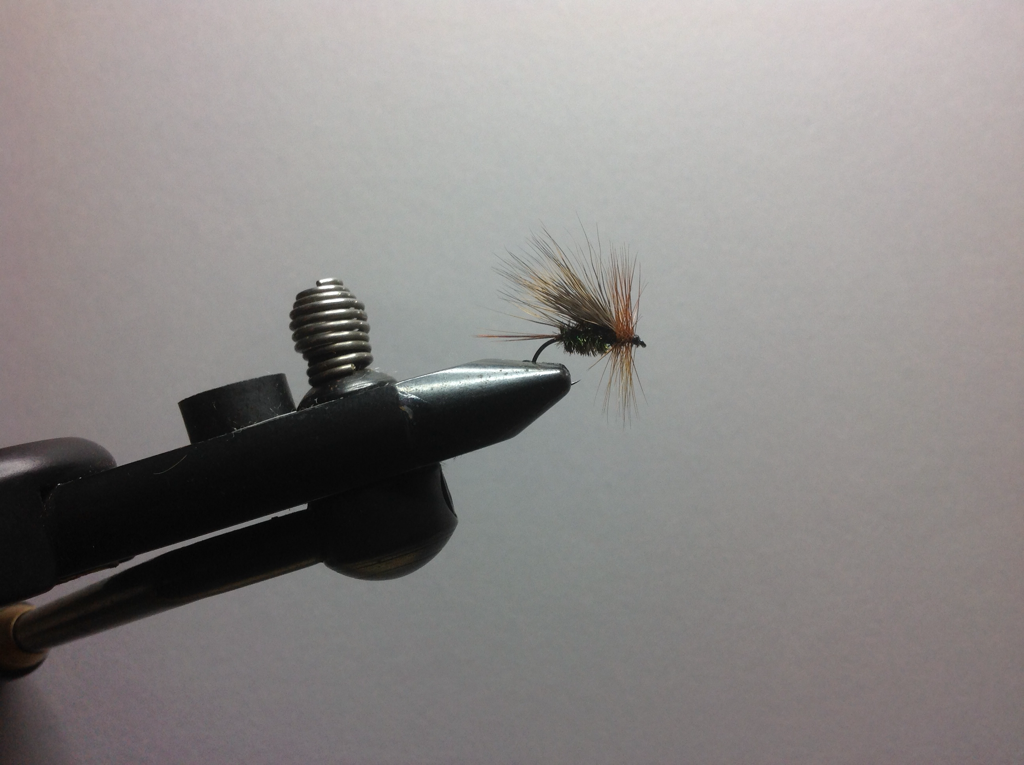 Melvin Bay fly pattern was one of Jim Warner's creations. As with many flies there is a story behind them. I have a handful of his files, some are his creations others are patterns he tied for his shop that others created. I have a bunch of Carrie Stevens patterns that he tied and sold in large numbers. He had a pattern called the Wolfeboro Bay which was basically a Mickey Finn that was topped with a white marabou plume. The Melvin Bay was identical to the Wolfeboro Bay but he substituted a dark blue dun marabou plume in place of the white one. Story goes that he was trying to wean a few of the locals off the traditional Grey Ghost which is how the Melvin Bay came about. I've seen this fly tied many times and often the marabou is very light grey. My understanding is the color of the marabou needs to be dark blue dun. It is supported in the flies I have of Jim Warner......all the grey is dark blue dun. The challenge comes in finding the marabou in the dark blue dun. When I see it, I scoop it up because os is hard to come by. The body on this fly is very unique. It is wrapped with silver oval tinsel and ribbed with flat river tinsel. I often have this as a pattern to sell at shows I tie at. If a real die hard Winnipesaukee angler comes by my table and sees one of these flies it gets an immediate reaction. Usually the story starts with "thats a deadly pattern". Hook Partridge Heritage 7 or 9x down eye streamer Body Silver oval tinsel ribbed with flat silver tinsel Throat Red hackle fibers Wing First layer sparse yellow bucktail or capras Second layer sparse red bucktail or capras Third layer dark blue dun marabou plume Fourth layer black silver pheasant crest or black ostrich herls Head White eye with black pupil
1 Comment
My grandfather had one of the first fishing camps at the base of Braggs Bay on the Androscoggin River in Errol. I was lucky to learn to fly fishing on that river. My relatives always created abuzz around the camp when it came to fly fishing. My father tells stories of former game warden Harry Hurlbert who sold the land to build the camp to my grandfather and how he was a regular visitor on the front porch sharing many stories.
I was visiting Ellis Hatch some time ago and talking NH fly tyers and old flies. He showed me some old patterns and one called the Deer Wing Alder fly. Each of the patterns he showed me had a name listing the originator of the fly, except the Deer Wing Alder. The pattern immediately looked familiar to me from my youth but I could not remember where I had seen it. I reached out to former game warden and now expert guide at Owls Roost Outfitters, Rick Estes. Rick and I have shared many stories about NH flies and their tyers. Through our correspondence we uncovered that Paul Maruca was the originator. Paul had a fly tying area in the Errol general store. My grandfather had frequented the store and realizing my interest in fly tying allowed me the opportunity to see this fly tied on one of our visits. I remember my Uncle Mike tying this pattern and using it around the Alder hatch. Eventually the pattern became a family favorite fished in small sizes 12-16 to imitate adult caddis and in larger sizes 10-12 for the Alder hatch. Deer Wing Alder Tail: Brown hackle fibers, I use about 8 fibers of stiff tailing fibers and I get them from Collins Hackle Farm in NY Body: Peacock herl wound over head cement, I use 3-4 Wing: Natural deer hair, I use comparadun hair because it does not flair too much when tied in. Hackle: Brown, to to the size of the hook and two turns should be enough. Tying notes: I teach this fly in a lot of my fly tying classes. One of the keys to this fly is to not overdress it by using too much deer hair for the wing or too many turns of the hackle. Sharing fly patterns for many sometimes is done under secrecy. I’ve seen guys scoot away from someone who asks them what fly they were using. In the article on fly tying in the 1956 NH Profiles the author struggled to get quality NH patterns from local tyers. Unfortunately, that’s the way a lot of these patterns have disappeared or changed so they no longer look like the original.
|
AuthorScott Biron is a fly tyer from New Hampshire. Archives
December 2023
Categories |

 RSS Feed
RSS Feed